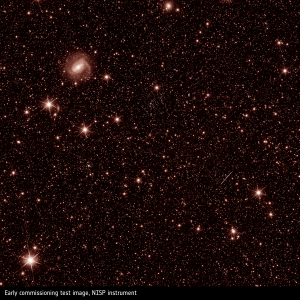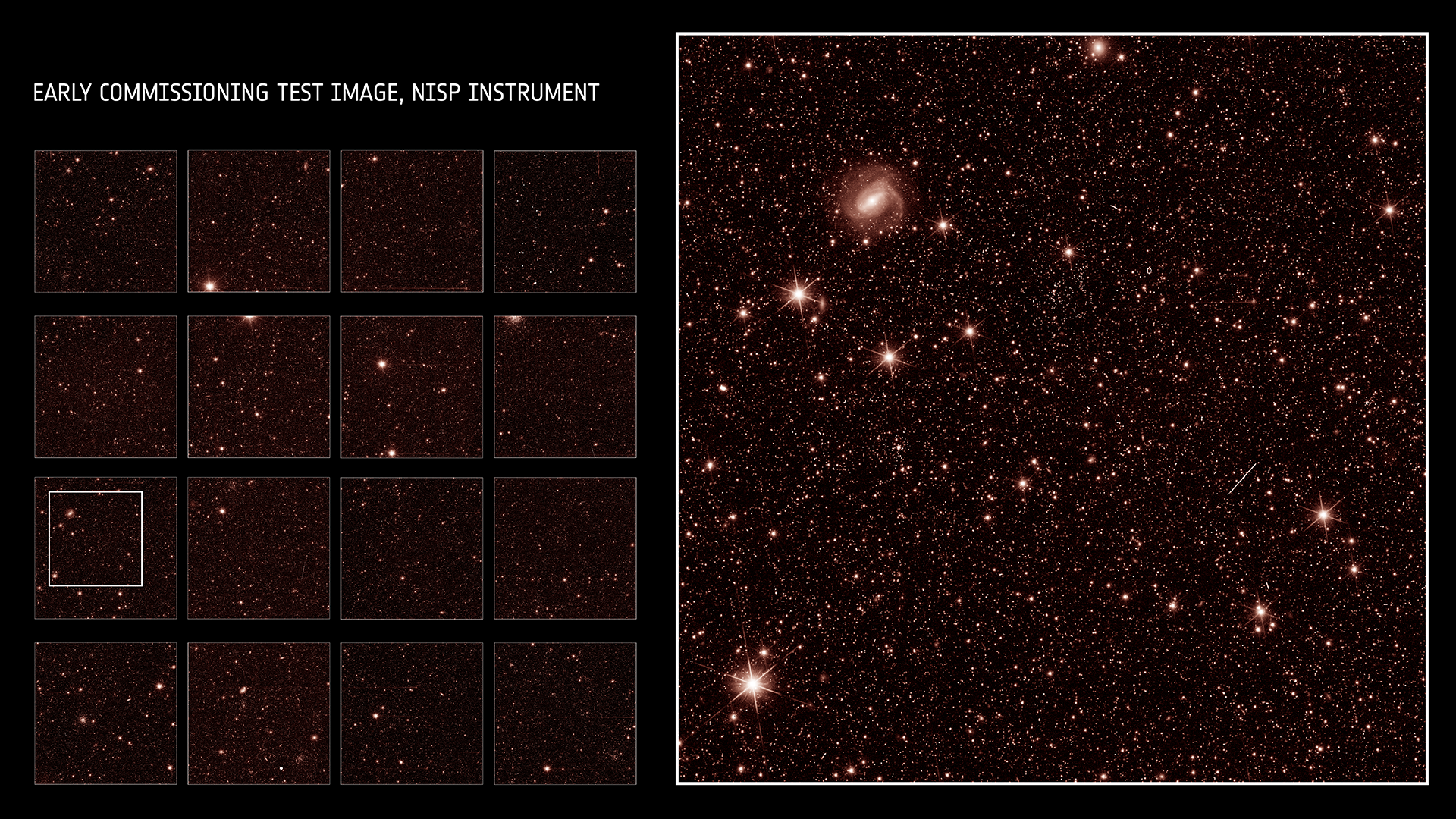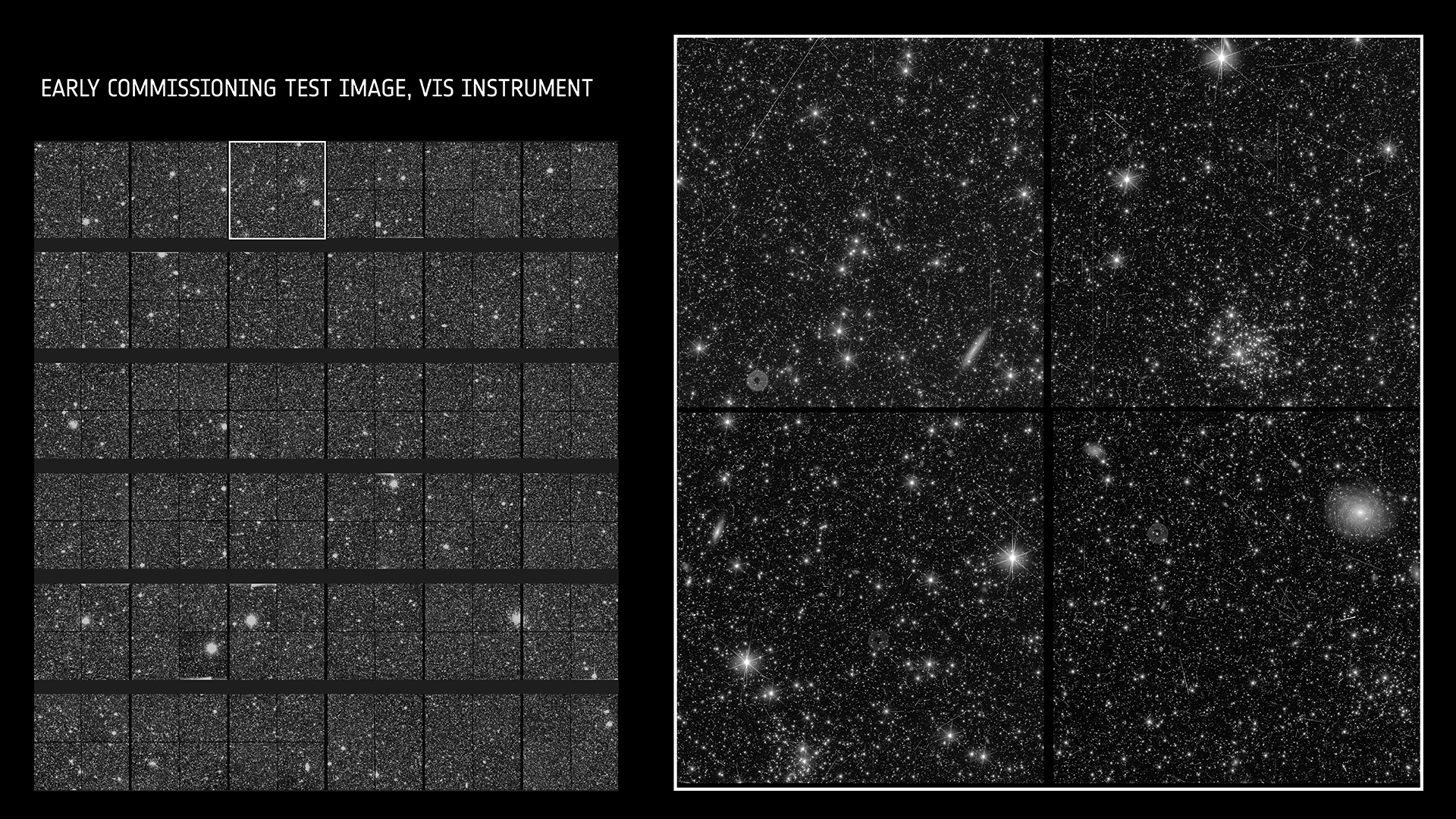Centro de Excelencia Severo Ochoa
Menu
Search

The Euclid Consortium will ultimately turn the longer-exposed survey observations into science-ready images that are artefact-free, more detailed, and razor sharp.
Euclid’s Near-Infrared Spectrometer and Photometer (NISP) instrument is dedicated to measuring the amount of light that galaxies emit at each wavelength. It will image the sky in infrared light (900–2000 nm) to measure the brightness and intensity of light.
The following images were taken during commissioning of Euclid to check that the focused instruments worked as expected. Because they are largely unprocessed, some unwanted artefacts remain – for example the cosmic rays that shoot straight across.

This is a raw image taken using NISP’s ‘Y’ filter.
The image on the left shows the full NISP field of view, with the zoom-in on the right (4% of NISP’s full field of view) demonstrating the extraordinary level of detail that NISP is already achieving. We see spiral and elliptical galaxies, nearby and distant stars, star clusters, and much more. But the area of sky that it covers is actually only about a quarter of the width and height of the full Moon.
Euclid’s telescope collected light for 100 seconds to enable NISP to create this image. During nominal operation, it is expected to collect light for roughly five times longer, unveiling many more distant galaxies.
Moreover, Euclid’s VISible instrument (VIS) will image the sky in visible light (550–900 nm) to take sharp images of billions of galaxies and measure their shapes. Euclid’s telescope collected light for 566 seconds to enable VIS to create this image.

About Euclid
Euclid is an ESA medium class astronomy and astrophysics space mission. By making use of both weak gravitational lensing, which measures the distortion of distant galaxies caused by intervening matter, and baryonic acoustic oscillations, based on measurements of the clustering of galaxies, the mission will capture a 3D picture of the evolving distribution of both dark and ordinary (or baryonic) matter in the cosmos. This will enable scientists to reconstruct the past few billion years of the Universe's expansion history, estimating the acceleration caused by the mysterious dark energy.
ESA selected Thales Alenia Space as prime contractor for the construction of the satellite and its Service Module, with Airbus Defence and Space chosen to develop the Payload Module, including the telescope. Euclid comprises two instruments: the visible instrument (VIS), and the near-infrared spectrometer and photometer (NISP). The Euclid Consortium is a collaboration of nationally funded scientists, engineers and managers responsible for the definition of the scientific mission and the provision of the scientific instruments and data processing. The VIS instrument is being built by a consortium of nationally funded institutes led by UCL Mullard Space Science Laboratory (MSSL), UK. The NISP instrument is being built by a consortium of nationally funded institutes led by the Laboratoire d'Astrophysique de Marseille (LAM) in France.
A consortium of scientists, engineers, and managers, Euclid is funded by national research agencies. Its responsibilities include defining the mission's scientific objectives, providing scientific instruments, and processing data. Since 2011, the IFT Gravitation and Cosmology group has been a member of the Euclid Consortium.
Social media